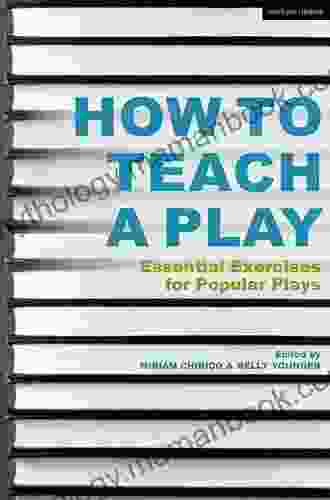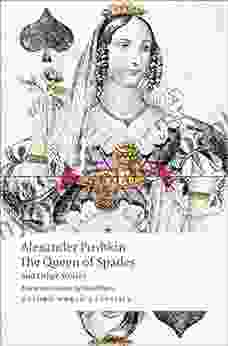How to Teach Play: Empowering Educators to Create Joyful and Meaningful Learning Environments

Play is an indispensable element of childhood that fosters growth and development in myriad ways. In the realm of education, play-based learning has emerged as a transformative approach that harnesses the power of play to ignite a lifelong love of learning. However, many educators face challenges in effectively incorporating play into their teaching practices. This comprehensive guide aims to empower educators with the knowledge, skills, and strategies necessary to master the art of teaching play and cultivate joyful and meaningful learning environments for their students.
Understanding the Importance of Play in Education
Cognitive Development
Play stimulates cognitive abilities, including problem-solving, critical thinking, decision-making, and creativity. Through play, children actively construct knowledge, experiment with different ideas, and develop essential cognitive skills.
4.7 out of 5
| Language | : | English |
| File size | : | 780 KB |
| Text-to-Speech | : | Enabled |
| Screen Reader | : | Supported |
| Enhanced typesetting | : | Enabled |
| Word Wise | : | Enabled |
| Print length | : | 313 pages |
| Hardcover | : | 552 pages |
| Lexile measure | : | 1700L |
| Item Weight | : | 2.3 pounds |
| Dimensions | : | 9.2 x 1.5 x 6.1 inches |
Social and Emotional Development
Play fosters social and emotional growth by providing a safe and structured environment for children to interact with peers. They learn to cooperate, negotiate, share, and resolve conflicts, all of which are crucial for healthy social-emotional development.
Language and Literacy Development
Play-based learning enriches language and literacy skills. By engaging in imaginative play and storytelling, children develop vocabulary, sentence structure, and comprehension. They also learn to connect written and spoken language through creative expression.
Physical Development
Play involves physical activity that promotes gross and fine motor development. It enhances coordination, balance, spatial awareness, and overall physical well-being.
Principles of Play-Based Learning
- Child-Centered: Play is driven by the interests, needs, and developmental stage of the child.
- Active and Engaging: Play involves active participation, exploration, and experimentation.
- Meaningful: Play provides opportunities for children to connect learning to their own experiences and make sense of the world around them.
- Social: Play encourages collaboration, communication, and relationship-building.
- Joyful: Play should be enjoyable and bring joy to children.
Effective Strategies for Teaching Play
Create a Playful Environment
Establish a classroom environment that is rich in play materials, such as blocks, puppets, art supplies, and sensory toys. Designate specific areas for different types of play, such as dramatic play, construction play, and imaginative play.
Observe and Support Play
Pay close attention to children's play and provide support when needed. Encourage their creativity, facilitate social interactions, and challenge them to extend their play. Avoid interrupting play unless absolutely necessary.
Use Play to Teach Curriculum
Integrate play into regular lessons to make learning more engaging and meaningful. For example, use dramatic play to practice social skills, construction play to teach math concepts, or imaginative play to develop language skills.
Reflect on Play
Regularly reflect on children's play and identify areas for improvement. Seek feedback from children and colleagues to enhance your play-based teaching practices. Stay abreast of research and best practices in play-based learning.
Benefits of Play-Based Learning
Increased Engagement and Motivation
Play-based learning captures children's interest and motivates them to learn. It creates a positive and enjoyable learning experience that fosters a love of learning.
Enhanced Cognitive Development
As mentioned earlier, play stimulates cognitive development in various ways. It promotes problem-solving, critical thinking, creativity, and decision-making skills.
Improved Social and Emotional Development
Play-based learning provides a safe and supportive environment for children to develop social and emotional skills, such as cooperation, communication, empathy, and self-regulation.
Increased Holistic Development
Play-based learning addresses the whole child, promoting physical, cognitive, social, emotional, and language development in an integrated manner.
Long-Term Success
Research has shown that children who engage in play-based learning tend to have improved academic outcomes, higher levels of creativity, and greater success in life.
Teaching play is not merely about providing entertainment but rather about harnessing its transformative power to create meaningful and engaging learning experiences. By embracing the principles of play-based learning and implementing effective strategies, educators can unlock the full potential of play and empower children to become confident, creative, and lifelong learners. As the renowned educator and philosopher Jean Piaget wisely said, "Play is the work of childhood."

4.7 out of 5
| Language | : | English |
| File size | : | 780 KB |
| Text-to-Speech | : | Enabled |
| Screen Reader | : | Supported |
| Enhanced typesetting | : | Enabled |
| Word Wise | : | Enabled |
| Print length | : | 313 pages |
| Hardcover | : | 552 pages |
| Lexile measure | : | 1700L |
| Item Weight | : | 2.3 pounds |
| Dimensions | : | 9.2 x 1.5 x 6.1 inches |
Do you want to contribute by writing guest posts on this blog?
Please contact us and send us a resume of previous articles that you have written.
 Top Book
Top Book Novel
Novel Fiction
Fiction Nonfiction
Nonfiction Literature
Literature Paperback
Paperback Hardcover
Hardcover E-book
E-book Audiobook
Audiobook Bestseller
Bestseller Classic
Classic Mystery
Mystery Thriller
Thriller Romance
Romance Fantasy
Fantasy Science Fiction
Science Fiction Biography
Biography Memoir
Memoir Autobiography
Autobiography Poetry
Poetry Drama
Drama Historical Fiction
Historical Fiction Self-help
Self-help Young Adult
Young Adult Childrens Books
Childrens Books Graphic Novel
Graphic Novel Anthology
Anthology Series
Series Encyclopedia
Encyclopedia Reference
Reference Guidebook
Guidebook Textbook
Textbook Workbook
Workbook Journal
Journal Diary
Diary Manuscript
Manuscript Folio
Folio Pulp Fiction
Pulp Fiction Short Stories
Short Stories Fairy Tales
Fairy Tales Fables
Fables Mythology
Mythology Philosophy
Philosophy Religion
Religion Spirituality
Spirituality Essays
Essays Critique
Critique Commentary
Commentary Glossary
Glossary Bibliography
Bibliography Index
Index Table of Contents
Table of Contents Preface
Preface Introduction
Introduction Foreword
Foreword Afterword
Afterword Appendices
Appendices Annotations
Annotations Footnotes
Footnotes Epilogue
Epilogue Prologue
Prologue Titilayo Meraiyebu Ogunbambi
Titilayo Meraiyebu Ogunbambi Carolina Mac
Carolina Mac Edward Jones
Edward Jones Brian Osbourn
Brian Osbourn Marlena Renee
Marlena Renee Hep Aldridge
Hep Aldridge Norman Lebrecht
Norman Lebrecht Brian Freeman
Brian Freeman Don Lasseter
Don Lasseter Christina Hart
Christina Hart Kenji Inoue
Kenji Inoue A M Van Dorn
A M Van Dorn Max Gorman
Max Gorman Barry Maz
Barry Maz Nikki Lockwood
Nikki Lockwood Bruce Walker
Bruce Walker Janie Marie
Janie Marie Akhil Reed Amar
Akhil Reed Amar Irene Roderick
Irene Roderick Marsha Black
Marsha Black
Light bulbAdvertise smarter! Our strategic ad space ensures maximum exposure. Reserve your spot today!

 Allan JamesCollection of 15 Fantastic Unpublished Oriental Stories Full of Teachings and...
Allan JamesCollection of 15 Fantastic Unpublished Oriental Stories Full of Teachings and...
 Winston HayesThe Untold Story of the 247-Day Hunt to Bring the Mastermind of 11 to Justice
Winston HayesThe Untold Story of the 247-Day Hunt to Bring the Mastermind of 11 to Justice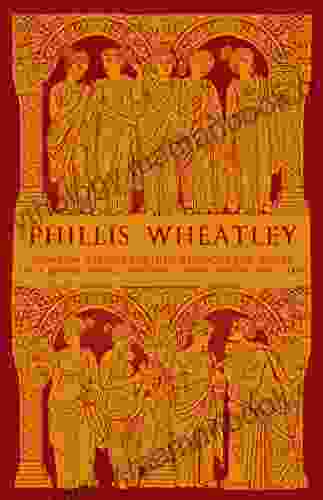
 Ibrahim BlairPoems On Various Subjects Religious And Moral And Memoir Of Phillis Wheatley:...
Ibrahim BlairPoems On Various Subjects Religious And Moral And Memoir Of Phillis Wheatley:... H.G. WellsFollow ·7.1k
H.G. WellsFollow ·7.1k Eddie PowellFollow ·15.4k
Eddie PowellFollow ·15.4k José SaramagoFollow ·4.5k
José SaramagoFollow ·4.5k Arthur MasonFollow ·9.3k
Arthur MasonFollow ·9.3k Miguel NelsonFollow ·18.9k
Miguel NelsonFollow ·18.9k Phil FosterFollow ·9.9k
Phil FosterFollow ·9.9k Yukio MishimaFollow ·5.7k
Yukio MishimaFollow ·5.7k Diego BlairFollow ·9.8k
Diego BlairFollow ·9.8k

 Christopher Woods
Christopher WoodsDeath's Second Chance: The Unbelievable Story of Cris...
On July 29, 2008, Cris...

 Esteban Cox
Esteban CoxFrom Ralphie Kids to Adolescents: The Journey to Manhood
The transition from...
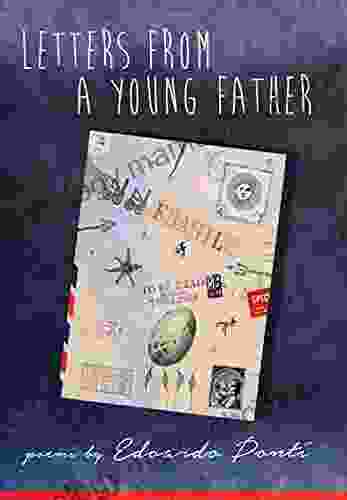
 Chris Coleman
Chris ColemanLetters From Young Father Poems: Delving into the Heart...
Fatherhood, a journey filled...
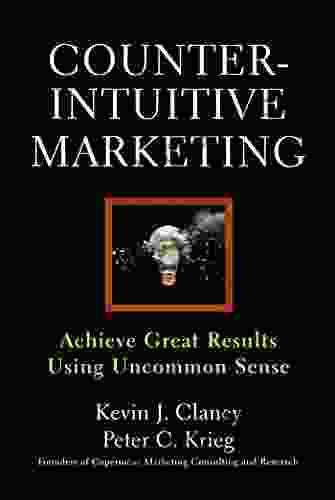
 Holden Bell
Holden BellCounterintuitive Marketing: Achieving Great Results Using...
In the ever-evolving world of...
4.7 out of 5
| Language | : | English |
| File size | : | 780 KB |
| Text-to-Speech | : | Enabled |
| Screen Reader | : | Supported |
| Enhanced typesetting | : | Enabled |
| Word Wise | : | Enabled |
| Print length | : | 313 pages |
| Hardcover | : | 552 pages |
| Lexile measure | : | 1700L |
| Item Weight | : | 2.3 pounds |
| Dimensions | : | 9.2 x 1.5 x 6.1 inches |


